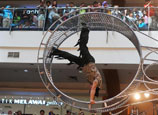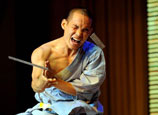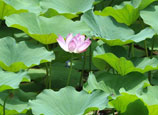
Today is the day to look forward and back, hold a feast, enjoy family reunion and pray for good weather.
This is the midpoint in the Chinese lunar calendar, the first day of the sixth month and it is known as Ban Nian Jie, or the Half Year Festival.
Traditionally, everything required for a Spring Festival feast to welcome the lunar new year is needed to celebrate the half year, however, it's not observed nationwide.
Among Han people it's traditional to celebrate the achievements of the first half year and to pray for food fortune in the next.
It's still a big day for people in the south, such as Zhejiang, Fujian and Hunan provinces, Guangxi Zhuang Autonomous Region and Taiwan.
A big feast with family reunion, firecrackers, zong zi (glutinous rice stuffed with fillings and wrapped in leaves) and balls of sticky rice and red yeast rice are necessary on the day.
In some regions, it is the second-biggest festival of the year after Spring Festival.
The tradition dates back 800 years. According to legend, a drought hit Jiashanwu Village in Louta Town of Hangzhou. The sun blazed and scorched the fields for 81 days after the Qingming Festival and people suffered greatly in a famine.
One day an old man with silver hair visited the village and was moved by the suffering. He promised to help on one condition - everyone should have fun for three days, as if they were celebrating the new year.
Villages had nothing for a feast, but they still managed a lively celebration. They used paper to make chickens, ducks and pigs and lighted bamboo joints as firecrackers.
On the third day, when all villagers knelt in a field and burned incense, thunder cracked the sky and a heavy rain fell.
The villagers started farming immediately and the harvest was excellent.
To show their gratitude to the old man, obviously a benevolent spirit, they maintained the tradition of celebrating on the day when he first visited.
The legend varies in different regions, but all focus on praying for good weather. As time went on, the festival became more about family reunion and good wishes for the next half of the year.
Essential festival foods are ban nian yuan, snack balls made of sticky rice and red yeast rice accompanied by sweet soup. Sticky rice symbolizes the ties binding family members, the round shape signifies tuan yuan mei man (family reunion and all the best), while the sweet soup symbolizes sweet moments.
In some regions, the ban nian yuan is first placed at the household shrine for ancestors or gods to show gratitude, and then served to the family.
















 First panda born in Taiwan is female | Photos
First panda born in Taiwan is female | Photos


![]()
